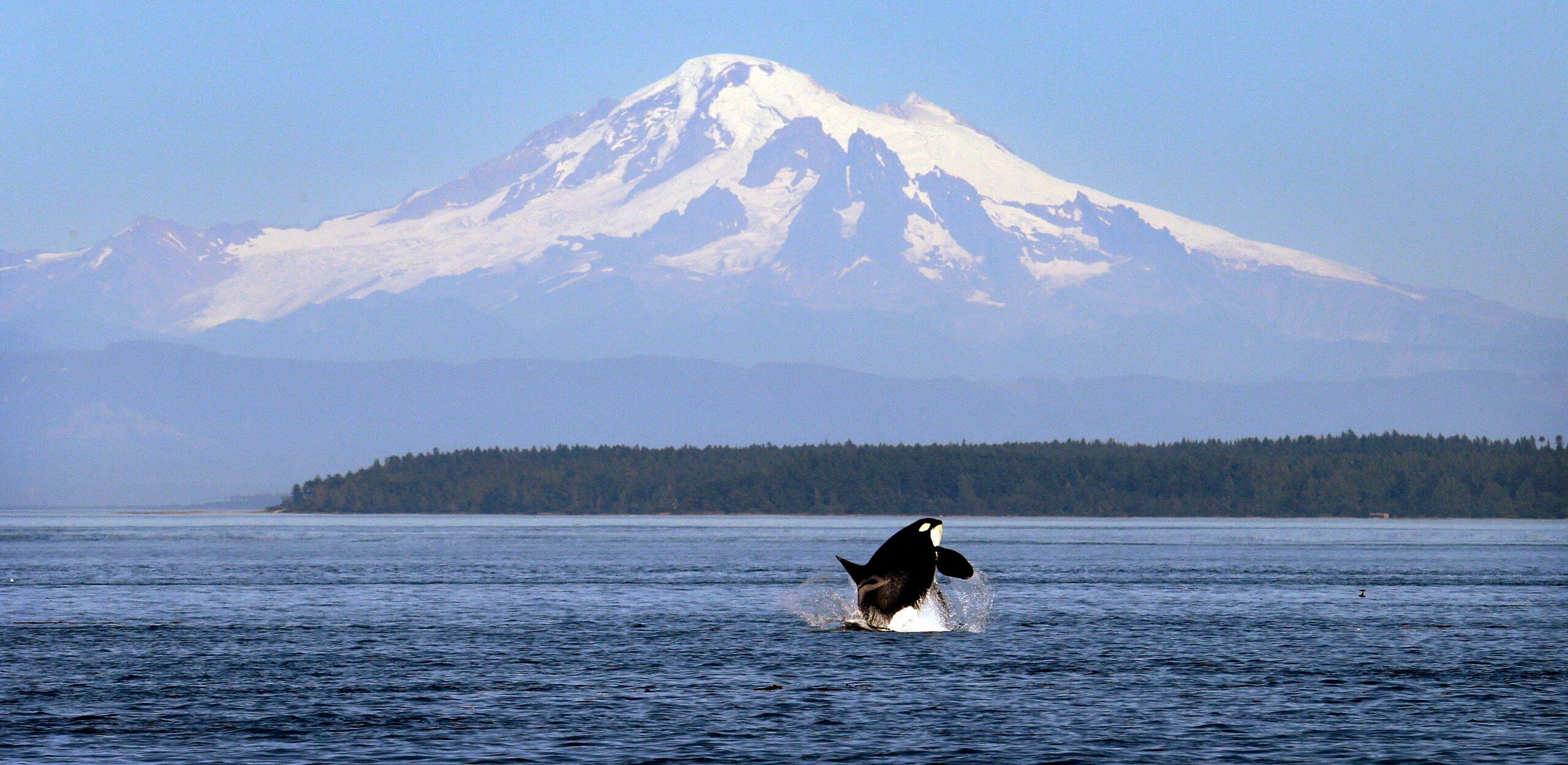Tragic Orca Deaths Underscore Urgent Need to Restore Salmon Runs
Deaths among Puget Sound orcas, which just hit their lowest population count in 34 years, remind us of the urgent need to protect and restore salmon runs in the Columbia-Snake River system.

This page was published 7 years ago. Find the latest on Earthjustice’s work.
Update, 6/18/18: The disappearance of an adult male orca nicknamed Crewser leaves the Puget Sound orca population at its lowest level in 34 years. The Center for Whale Research said Saturday that Crewser is presumed dead after not having been seen since November 2017. Southern resident orca pods are down to just 75 whales, from 98 in 1995.
The orcas’ population slump parallels the decline of Chinook salmon, a cornerstone of the whales’ diet. But the southern resident pods don’t need to go extinct if we save their food source. Scientists say the single best thing we can do to restore wild salmon — and therefore the orcas who feed on them — is to take out the Ice Harbor, Little Goose, Lower Monumental and Lower Granite dams on the lower Snake River. Earthjustice will continue to fight for the removal of these four outdated dams.
Original post, 11/15/16: The scene last month in the Puget Sound was tragic: Two adult orcas, sister and cousin of a 10-month-old calf called J54, tried to lift the young whale to the water’s surface so he could breathe. Earlier this week, researchers at the U.S. Center for Whale Research reported the death of the calf’s mother, J28, an iconic member of this orca population. She was well known to regular whale watchers, who could easily identify her because of a distinctive notch in her dorsal fin. Both the mother, J28, and son, J54, had been spotted in previous weeks looking weak and emaciated. Now starving, exhausted and without his mother to nurse him, scientists have little hope for the calf’s survival.
Researchers who track these southern resident killer whales say that after these and other recent deaths, the population is now just 80 individuals, among the lowest it has been in decades. The southern residents were added to the endangered species list in 2005. They face threats ranging from pollution to shipping noise and traffic to the loss of their main food source, Chinook salmon, many runs of which are also listed as endangered. Ken Balcomb, senior scientist at the Center for Whale Research, explained to Vancouver News that despite large amounts of money spent to study and recover the whales, there has been virtually no growth in this population over the past 20 years.
Orcas J28 and J54 belonged to a pod of whales that feed for part of the year on salmon that spawn in the Columbia-Snake River system in the Pacific Northwest, the most heavily dammed river system on Earth. Since the dams were completed, wild salmon populations in the area have plummeted by more than 95 percent. Scientists say the single best thing we can do to save wild salmon is to take out four dams on the Lower Snake River: Ice Harbor, Little Goose, Lower Monumental and Lower Granite.
The dams themselves are outdated and only supply about 4 percent of the region’s energy, power that could be replaced with greater efficiency, conservation and renewable energy resources. Scientists, fishermen, tribal groups and others throughout the Pacific Northwest are calling for the removal of the four dams to boost struggling salmon populations and assist other creatures that depend on salmon for survival, including orcas and grizzly bears.
For nearly 20 years, the federal agencies — Bonneville Power Administration, Army Corps of Engineers, and the Bureau of Reclamation — that operate these salmon-killing dams have done all they can to avoid changing the status quo. But last May, following an Earthjustice victory when a federal judge ordered the agencies to develop a plan for dam operations that will restore wild salmon runs — and instructed them to specifically consider removing the dams.
The tragic death of J28 and the likely death of her calf, J54, remind us of our responsibility to protect and restore salmon runs and the species that depend on them for survival. The real question is how long we will put up with wasting federal tax dollars on increasingly irrelevant lower Snake River dams that are deadly to salmon and the orcas that rely on them.
Established in 1987, Earthjustice's Northwest Regional Office has been at the forefront of many of the most significant legal decisions safeguarding the Pacific Northwest’s imperiled species, ancient forests, and waterways.